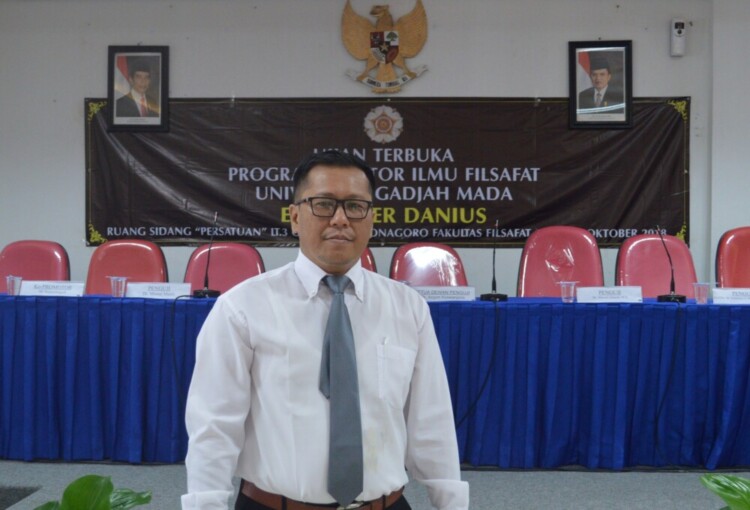
Impacts of Halmahera conflict which happened in Malifut district in 1999 are still felt today among society.
Society still lives in suspicion against each other that may trigger conflicts again. Hence, studying Halmahera conflict using René Girard’s mimetic theory is expected to be able to find the roots of the conflict.
Ebin Eyser Danius, lecturer in Divine Philosophy study programme of Hein Namotemo University, touched upon this issue in his doctoral promotion at Faculty of Philosophy UGM on Thursday (11/10). He adopted the mimetic theory of René Girard to observe the unresolved process of relocation of Makian tribe to Malifut area. The unresolved matter has caused confusion whether to stay in Malifut or back to Makian island.
Ebin said the condition created gaps among Makian and Pugu tribe who is the native people. Land dispute also occurred which led to competition.
“The fight for lands enhances the identity which in turn creates competition turning into conflict and violence,” he said.
The unresolved relocation of Makian people to Malifut, said Ebin, also opened opportunities for local politicians to show their influence. Bonds that should have been established between people in Malifut did not emerge. The bonds were established instead outside the community. So, escalated tension emerged in Malifut.
“As such the Malifut conflict is an accumulation of various situations that emerge due to the relocation process that should have been done by the government,” he explained.
The analysis of René Girard’s mimetic theory towards the Halmahera conflict also showed that the escalated competition that turned into violent conflict was because the scapegoat mechanism did not work. Competition expression emerged because the mimetic desire did not find the forum that can reduce the continuous tension and competition between both tribes.
During the first conflict in August 1999 both tribes did not find ways to reduce the tension. The unavailability of forum sparked another competition with an increasing intensity.
In October 1999 conflict with violence erupted. Various factors that supported the emergence of conflict led to both tribes unable to find someone to blame. Both were also seen as refraining from finding a solution.
“This happened due to accumulation of various factors that made both tribes see that the only way to resolve the problems is by conflict with violence. This was observable when the identity strengthens, differences are more visible,” Ebin concluded.


